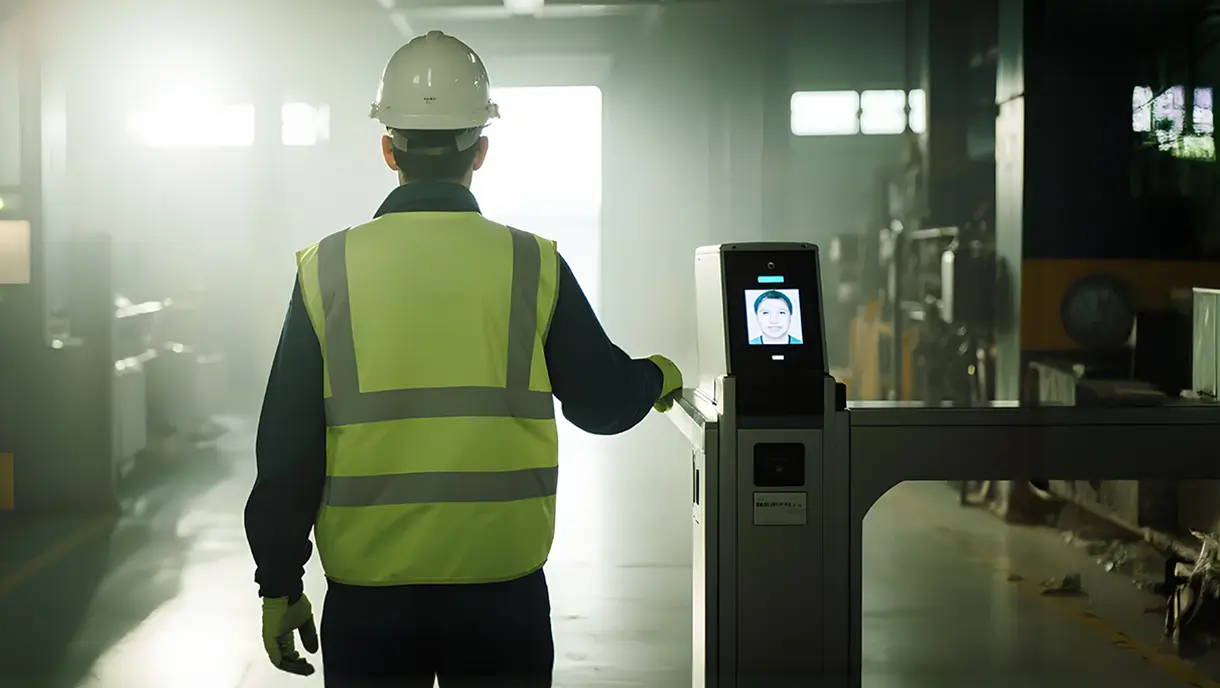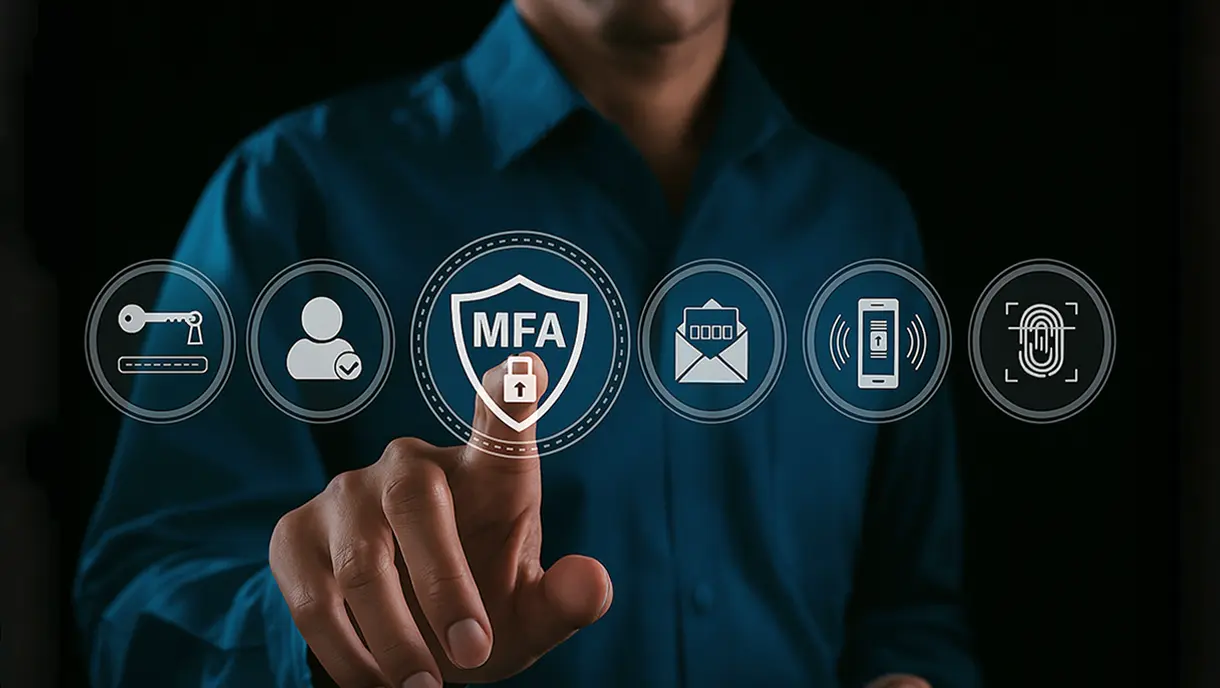Beyond Fingerprints: Power of Multimodal Biometric Authentication
Multimodal biometric authentication uses multiple biometric traits—like fingerprint, face, and voice—to verify identity, making it more secure than traditional or single-factor methods. By combining physiological and behavioral data, it reduces the risk of spoofing and enhances accuracy. Compared to multi-factor authentication, which combines different types of credentials (e.g., password + OTP), multimodal focuses solely on "who you are." It’s ideal for high-security use cases and is shaping the future of seamless, passwordless authentication.

Remember the frustration of a forgotten password?
The vulnerability of a simple PIN? In our hyper-connected world, traditional authentication methods are leaving our data exposed. But what if unlocking your digital life could be as effortless as a smile or the sound of your voice? Enter multimodal biometric authentication, a revolutionary approach that leverages the unique characteristics of your body for unparalleled security.
What is Multimodal Authentication?
A multimodal authentication system utilizes multiple biometric identifiers to verify a user's identity. These identifiers can be physiological (fingerprint, iris) or behavioral (voice, gait). By combining these modalities, the system creates a more unique and spoof-resistant profile compared to single-factor authentication methods.
Multimodal Authentication Example
Imagine a scenario where you're accessing your high-security bank account. Instead of just entering a password, the system might prompt you for:
- Fingerprint scan
- Facial recognition
- Voice verification
This combination significantly reduces the risk of unauthorized access, as an intruder would need to forge all three biometrics to gain entry.
Benefits of Multimodal Biometric Authentication
- Enhanced Security: Combining multiple biometrics exponentially increases the difficulty of spoofing a user's identity.
- Improved Accuracy: Individual biometrics may have limitations, but multimodal systems compensate by leveraging the strengths of different modalities.
- Convenience: Multimodal systems can be designed for a seamless user experience, integrating biometric capture into everyday actions like unlocking your phone.
Synchronous vs. Asynchronous Multimodal Biometric Authentication
User Experience
- Synchronous Multimodal Authentication: Requires simultaneous presentation of all biometrics
- Asynchronous Multimodal Authentication: Biometrics can be presented sequentially
Security Level
- Synchronous Multimodal Authentication: Generally considered more secure
- Asynchronous Multimodal Authentication: May be less secure depending on the implementation
Suitability
- Synchronous Multimodal Authentication: Ideal for high-security applications
- Asynchronous Multimodal Authentication: Can be used for lower-security applications or where user convenience is a priority
Biometric Authentication using Fused Multimodal Biometrics
Multimodal biometric authentication utilizes a process called fusion to combine data from various modalities. This fusion can occur at different stages of the authentication process, impacting accuracy and security. Here are some common fusion techniques:
- Score-level fusion: Individual biometric scores are combined using a weighted average or other algorithms.
- Decision-level fusion: Each biometric modality outputs an accept/reject decision, and a final decision is made based on a majority vote or other rules.
How is Multimodal Authentication Different from Multi-factor Authentication?
Multimodal and multi-factor authentication are both security measures that require more than one piece of information to verify a user's identity. However, they differ in the type of information they use:
Multimodal Authentication:
- Uses multiple biometric identifiers from the same individual, such as fingerprint, facial recognition, and iris scan.
- Focuses on "something you are" to provide a more robust and secure form of authentication.
- Often used in physical access control systems (e.g., requiring both a badge and facial recognition to enter a building).
Multi-factor Authentication (MFA):
- Uses multiple factors from different categories, such as:
- Something you know (password, PIN)
- Something you have (security token, smartphone)
- Something you are (biometrics)
- Aims to combine different authentication methods to create multiple layers of security.
- Commonly used for online accounts (e.g., requiring a password and a code sent to your phone).
Key Differences Between Multimodal Authentication and Multi-factor Authentication
Type of Information
- Multimodal Authentication: Multiple biometric identifiers
- Multi-factor Authentication: Multiple factors from different categories
Focus
- Multimodal Authentication: "Something you are"
- Multi-factor Authentication: Combination of "something you know," "something you have," and/or "something you are"
Common Use Cases
- Multimodal Authentication: Physical access control systems
- Multi-factor Authentication: Online accounts, sensitive systems
FAQs
Q1: Is multimodal biometric authentication foolproof?
While highly secure, no system is completely infallible. However, the difficulty of forging multiple biometrics makes multimodal systems significantly more robust than single-factor authentication.
Q2: What are the privacy concerns with multimodal biometrics?
Secure storage and management of biometric data is crucial. Users should be informed about how their data is used and protected.
Q3: Where are multimodal biometric systems used?
These systems are increasingly being used in high-security applications like border control, financial transactions, and access control for sensitive data.
The Future of Multimodal Biometric Authentication
Multimodal biometric authentication offers a powerful solution for a more secure and convenient digital future. As technology advances, we can expect even more sophisticated and user-friendly multimodal systems to emerge.






Get the latest updates! Subscribe now!




